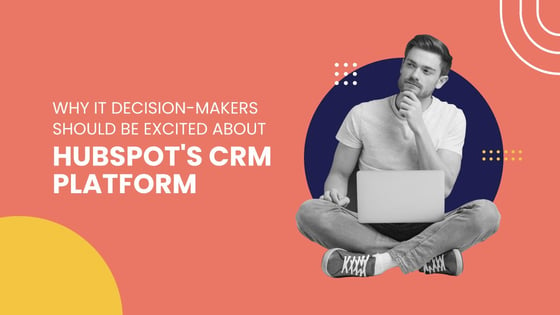


Why IT decision-makers can benefit from HubSpot CRM platform




The structure of the HubSpot CRM platform
Decision-makers in the Information Technology space of a business should be excited about how HubSpot's CRM platform is built. One of the biggest pain points that most IT decision-makers have is encouraging adoption of new platforms and technologies internally. Not only is the HubSpot CRM platform a single source of truth for the go-to-market departments in organisations, but it also allows for business needs to be met without complicating processes.
As CRM platforms have evolved over time, they've piggybacked off of existing technologies in order to get several jobs done, rather than having one system that they can use across many different business areas. For instance, HubSpot CRM is broken into different Hubs that are built for sales, marketing, and service teams separately, yet allow for all of these teams to view information as they work together cross-functionally.
The HubSpot CRM framework
When it came to the actual creation of their CRM platform, HubSpot decided to use their own product to build a multi-faceted system that offers a consistent experience, which makes pitching, purchasing, onboarding, and implementing an easier process for IT decision-makers advocating for a system that holds the majority of a business's sensitive information in a safe, secure structure.
For the user experience in HubSpot CRM, the framework is as follows:
- Data
- Reporting
- Automation
- Messaging
- Content
These pieces work together to provide a structure of each of the four Hubs that the HubSpot CRM platform is broken down into. Once they determine what information they want to include within their specific HubSpot instance, IT teams have a consistent foundation to work with in the form of a cohesive software system.
Even though the system is fully customisable, it doesn't mean that it has to be hard to use. In fact, it is easier for teams to make the system as simple as necessary for their team members to use. Rather than presenting an overpowering new piece of technology, they can focus on empowering their employees to succeed with the tools provided to them.
Hub features that IT decision-makers should be excited about
During the first quarter of 2021 alone, the HubSpot product team has made some incredible changes to their CRM platform. There are highlights for each of the Hubs that both ease common stressors for members of IT teams focused on training internally, and reduce friction for go-to-market teams that may be newer to using the CRM platform.
These include:
- Automating workflows for adding data to Google Sheets
- Gathering analytics from TikTok
- Creating dynamic content based on existing data sets in HubSpot
- Configuring sequences based on attribution
- Dictating internal team notes
- Opting-in for support tickets
TL;DR
IT decision-makers are aiming to purchase secure technologies that are easy for their fellow employees to adopt, and that increase efficiency when it comes to daily business operations and activities. With HubSpot CRM platform, the benefits are clearly outlined for each of the standard go-to-market departments while still providing an all-access source of truth that everyone can feel confident referring to.







